
Bath & Body Oil: Grapefruit Ylang Ylang
- Out Of Stock

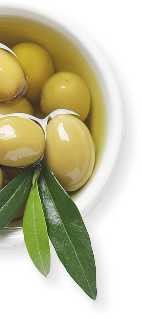
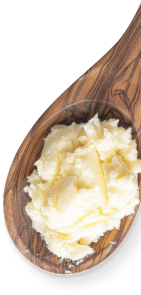




Treat your lips to a silky smooth organic lip balm formulated with a skin-softening blend of nourishing plant oils and butters that penetrate to moisturize, soften, and hydrate lips. Lavender and ylang ylang are soothing skincare essential oils that provide a calming scent.





Lavender and ylang ylang are not only soothing skincare essential oils but as you inhale the lovely scent it inspires feelings of comfort and ease throughout the day.
This conditioning lip butter is packed in an oversized paperboard tube. It has a creamy silky texture that glides on easily and readily absorbs into your lips to nourish, hydrate and seal in moisture.
Mango Butter leaves lips soft, smooth, and moisturized without feeling greasy. It creates a thin effective barrier to help maintain lip moisture and promote a soft, conditioned appearance.
Sunflower Seed Oil, rich in a wide variety of nutrients, is excellent for lips because it enhances the skin’s ability to retain moisture so the lips stay soft, supple, and hydrated.
Thick, rich Castor Oil is softening, super moisturizing, and deeply hydrating. It offers a subtle sheen for beautiful lips.
Beeswax is a natural emollient, which means it helps to soften, soothe, and hydrate lips. Beeswax provides an gentle natural barrier that helps lock in moisture and promotes a smooth and conditioned lip texture.
What you put on your lips goes into your body. Our All Natural, Certified Organic, Cruelty-Free, Non-GMO lip balms are never made with any petroleum products, artificial colors, preservatives or synthetic fragrances or flavors.
This lip balm is packaged in a 0.3 oz eco-friendly paperboard tube which is over 2 times the size of a standard lip balm. The recyclable, push-up paperboard tubes has FSC certification. Zero-Waste and Plastic-Free!
Plastic waste is a huge global problem. It is estimated that over 200 million plastic lip balm tubes end up in landfills or our oceans every YEAR. When making your choice for a good balm for your lips, be mindful of our awesome planet and choose a good product for our environment made without synthetic ingredients or plastic packaging.
Remove the top and gently push up on the tube base to expose a small amount of lip balm. If the lip balm has been left in the cold, warm the tube in your palms for a few moments. The creamy texture glides on easily.
Apply liberally and as often as needed whenever lips need a hydrating and nourishing boost. Especially great during cold, dry or windy weather, to moisturize, soothe and protect dry, chapped lips.
Before replacing the cap on the tube, tap the tube bottom on a hard surface and the product should slide back into the tube. Do not use your fingers to push the product back in from the top or you will literally have a mess on your hands.
For external use only. Discontinue use if irritation occurs. Best if used within 6 months of opening. Store upright in a cool dark place and avoid direct sunlight. Due to the natural formula, the lip balm can become softer in very warm conditions. If you open the lip balm and it feels too soft, place it in a cool space to firm up before using .
Once you are done, don't forget to recycle!




The goal is simple: to Harness the Power & Simplicity of Nature® to cleanse, soothe, heal, and protect your skin and hair!
Our unique formulas rely on moisturizing oils and butters, healing botanicals, and pure essential oils. We choose every ingredient with one end-result in mind….the BEST possible natural skin care for YOU!
 Organic Mango Butter
Organic Mango Butter
 Organic Lavender Essential Oil
Organic Lavender Essential Oil
 Organic Ylang Ylang Essential Oil
Organic Ylang Ylang Essential Oil
*Ingredient is Fair Trade Certified
When compared to essential oils, fragrance oils are cheaper, less temperamental, and come in a wider variety of scents that will last much longer, so why do we use only pure botanical essential oils?
Essential oils are made from 100% natural plant material. They are extracted from different parts of a plant, such as flowers, herbs, fruit rinds, roots, etc., through the process of steam distillation or compression.
 Fragrance oils are created in a laboratory. There are two broad types of fragrance oils, Synthetic Fragrance Oils (sometimes called Nature Identical Fragrance Oils) and Natural Fragrance Oils.
Fragrance oils are created in a laboratory. There are two broad types of fragrance oils, Synthetic Fragrance Oils (sometimes called Nature Identical Fragrance Oils) and Natural Fragrance Oils.
Synthetic Fragrance oils are artificially created from chemical compounds that do not exist in nature. They often contain phthalates, petrochemicals, and other ingredients that can be harmful to our bodies and the environment.
Natural Fragrance oils are also made in a lab but are created by isolating natural aromatic components from a complex scent. There are companies now making lovely "natural" fragrance oils. These scented oils are formulated using proprietary blends of aromatic isolates.
The key word here is proprietary, which means NO transparency.
A company's "fragrance" blends are considered "trade secrets," and are protected under the trade secret law. This means that the FDA does not require the manufacturer to list all of the ingredients in a fragrance oil, just the word "fragrance" is required.
Thus, we will never know the ingredients present in a formulation. The generic term, “fragrance” or “parfum” on a label can indicate the presence of up to 3,000 separate ingredients.
The regulation, designed to hide ingredients from competitors, also hides them from the consumer who may want or need to know what is in the products they are using.
Since it is our commitment to our customers to list ALL of the ingredients used in our products, we use only pure essential oils to scent our products.
Learn More Blog, "Natural Fragrance Oil? . . . Really?"
Fragrance oils do not provide the same benefits as essential oils, since they are designed purely to mimic a scent.
 Nature is complex, and essential oils have benefits beyond just scent.
Nature is complex, and essential oils have benefits beyond just scent.
Fragrance oils are artificially created and, even those that are made from natural components, do not offer the therapeutic advantages of essential oils. When we isolate only the natural aromatic components from a plant, we miss out on the potential benefits the whole plant could offer.
Synthetic fragrance oils do not have healing or medicinal properties. Essential oils retain valuable properties from their parent plant. For example, essential oils like Tea Tree and Rosemary have natural antibacterial or antiviral properties.
Synthetic fragrance oils may duplicate the smell of a flower or herb, but they have no aromatherapeutic value.
We choose specific oils not only for their skincare benefits but also for the aromatherapy they offer. Only natural botanical essential oils can cause various neurochemicals to be released in the brain which can affect the body, mind, and spirit. For example, the aroma of natural Lavender, Petitgrain, and Chamomile essential oils acts as a natural sedative.
 Because It Is The Natural Thing To Do and we are an organic skin care company whose motto is "Harnessing the Power & Simplicity of Nature.®"
Because It Is The Natural Thing To Do and we are an organic skin care company whose motto is "Harnessing the Power & Simplicity of Nature.®"
Although fragrance oils are available in a wider selection and at a much lower cost, we use only the purest natural plant essential oils.
Skincare products are only as good as the ingredients used to create them. It does not make sense to create natural, handmade skincare products with fragrances created in a laboratory that artificially mimic only the scent of natural plant material and offer none of the benefits of a true essential oil.
Ever wonder why skin care companies would ever use synthetic fragrances? Fragrance oils have a much lower cost and a much longer lifespan.

How to Diffuse Essential Oils for Personal Use
How We Decide What Scents Not to Use?
Why Are Synthetic Fragrance Oils So Popular?
Natural Fragrance Oil? . . . Really?
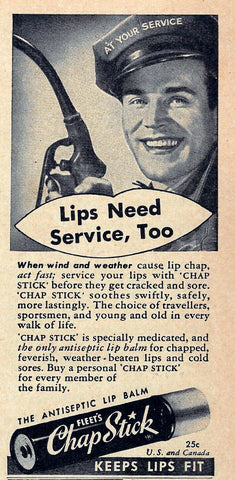 From ancient civilizations to the present day, people have been using products to keep lips moisturized and protected from the elements. The use of beeswax, olive oil, and animal fats to treat dry lips can be traced back to the time of Cleopatra around 40 B.C.
From ancient civilizations to the present day, people have been using products to keep lips moisturized and protected from the elements. The use of beeswax, olive oil, and animal fats to treat dry lips can be traced back to the time of Cleopatra around 40 B.C.
Throughout the centuries numerous civilizations continued to invent their own lip treatments.
In 1829, an American women’s rights activist named Lydia Maria Child published a book called "The American Frugal Housewife" in which she recommended earwax (yes, wax from your ears) as a cure for chapped lips.
Earwax was replaced by a "petroleum jelly" product invented by American chemist Robert Chesebrough in 1872. He sold his product as “Wonder Jelly” which was later renamed Vaseline.
The first lip treatment that closely resembled the lip balms of today was invented in the early 1880s by Charles Browne Fleet, a pharmacist from Lynchburg, Virginia. It resembled a small wickless candle wrapped in tin foil and was called ChapStick.
Fleet's new lip balm did not sell well and in 1912 he sold his recipe for five dollars to John Morton. Morton's wife began tinkering in her kitchen. She added a bit of pink dye and poured the waxy formula into brass tubes to mold them into sticks. The business was successful and the Morton Manufacturing Corporation was founded on the sales of Chapstick. (1944 Ad taken from Duke University Libraries: Collections & Archives)
Lip butter or lip balm is probably the most universal body care item used.
While it may be more convenient (and sometimes cheaper) to buy your lip balm in the checkout line, please check out the ingredients?
The ingredients will vary from items like organic beeswax and plant oils to low-quality petroleum and mineral oils. The ingredients should not be some sort of coded mystery.
 Can you read all of the ingredients? Do you know what they are without an internet search?
Can you read all of the ingredients? Do you know what they are without an internet search?
If not, it might be time for you to find a natural alternative for your lip care.
Commercial lip balms often include petroleum-derived ingredients such as mineral oil, petrolatum, and paraffin.
One other consideration is that since lip balms are applied on the lips, you will most likely ingest some of the ingredients So be sure to choose a lip balm with ingredients that you don't mind eating.
Despite the promises of miracle lip repair, many lip balms can actually damage thin lip skin and make dry lips even drier.
The skin on our lips is very thin and extra sensitive and puts up with a lot of wear and tear through eating, drinking, breathing, talking, kissing, etc. This skin does not produce melanin and does not contain sebaceous glands or sweat glands to protect against environmental assaults such as cold, heat, wind, or even acidic or spicy foods.
While it's normal for lips to get chapped, lips require special attention to prevent cracks and inflammation that can lead to infections and painful sores.
Dry lips can result from not drinking enough water, living in a dry climate, winter dry skin, licking your lips, the accumulation of dry skin, as well as from an reaction to one or more ingredients.
Since the lips are so unique when compared to the skin on the rest of the body, our lips need a some extra TLC to keep them looking and feeling healthy.
Lips want gentle, natural ingredients that condition and soften. Look for natural moisturizing lip balms, that will penetrate and heal the skin—not simply coat the skin’s surface.
The moisturizing oils and butters in our creamy, organic natural lip balms penetrate deep into the skin cells. Each recipe is made using natural ingredients recognized for their soothing, moisturizing, and healing qualities.
So, the next time you are looking for a lip balm,
we have some ingredients you should look for—and a few to avoid.
 Lip Balm Ingredients To Look For
Lip Balm Ingredients To Look For
There are many lip balm ingredients that can actually cause dry lips! For example, phenols, camphor, salicylic acid, alum, and menthol can all dry your lips and cause irritation if used for an extended period of time.
Insider Tip: Apply Lip Balm At Night Before Going To Bed
At night, many people sleep with their mouths open, causing their lips to dry out. We’ve found that if you apply lip balm before going to sleep, you will wake up with softer, moisturized lips. Give it a try—especially in the winter.
All of our lip balms harness the power of nature's finest ingredients to provide long-lasting hydration and nourishment to dry, chapped lips. Rich botanical butters like shea and cocoa butter, combined with a blend of natural oils like sunflower and coconut, create a protective barrier that locks in moisture and soothes dryness. Indulge in the luxury of soft, healthy lips, naturally!
The result is soft, smooth lips that feel comfortable and healthy. Our lip balm is perfect for everyday use, providing a gentle, non-greasy texture that keeps lips hydrated and happy.
The first thing to decide is whether you prefer your lip balm in a tube or a tin. We make both in eco-friendly packaging (no plastic).
We are excited to introduce our collection of 5 lip balms in tubes, crafted with love and care to nourish and protect your lips. Made with only the finest organic ingredients carefully selected to provide long-lasting hydration, these lip butters melt onto your lips with a rich, velvety smoothness, leaving a sumptuous, silky finish that is pure bliss.

With their rich, creamy textures and beautiful, eco-friendly packaging, our lip balms make the perfect treat for yourself or a thoughtful gift for someone special.
Four tubes are the same recipe using a nourishing base of organic plant oils and butters with different natural "flavors" using essential oils.
Our Three Butter Lip Balm has no added scent and uses moisturizing plant oils, cocoa butter, shea butter, and mango butter to create a unique moisture barrier to help heal, protect, and nourish sensitive lips.
Each lip balm is packaged in a 0.3 oz eco-friendly paperboard tube, which is over 2 times the size of a standard lip balm. The recyclable, push-up paperboard tube has FSC certification and is Zero-Waste and Plastic-Free!
These 6 lip balms (plus 1 seasonal) are each a special recipe. They are made in recyclable 1/2 ounce tins in order to keep the ingredients as concentrated as possible using less or no beeswax.
In the end all of our lip balms offer the same benefits - hydrating, moisturizing, and soothing ingredients that help heal dry, chapped lips and leave them soft and smooth.
Take note of how your skin responds to different ingredients in the lip balms to find the best one for your unique lip skin type.
Also, your skin's needs will often change with the seasons! Your favorite summer lip balm may not be your favorite winter lip balm.
Each of our Lip Balm Tins is crafted with unique blends of ingredients. Whether you are looking to soothe dryness, calm irritation, or nourish and protect, our lip balms are formulated to provide targeted benefits for healthier, happier lips. Below, we have described a few of our favorites and included others that also fit the category.
My absolute favorite "glossy" lip butter is our Honey Butter Lip Balm. Honey hydrates and moisturizes, has antimicrobial and wound healing properties, and adds a lovely creamy gloss to the lip balm.
One of our favorites for a bit of lip TLC for sunny days and dry lips is our vegan buttery Creamy Shea lip balm made with moisturizing Virgin Shea butter, Babassu Oil and Jojoba Oil to help calm irritated skin and soothe lips.
One of our favorites for irritated lips is our concentrated Three Butter lip balm. Moisturizing plant oils, cocoa butter, shea butter, and mango butter create a unique moisture barrier to help heal, protect, and nourish sensitive lips.

Our Soothing Herbs Lip Balm helps calm and comfort lips in need of extra care. This organic lip balm is made with healing oils like Sea Buckthorn and soothing botanicals like Calendula. Within minutes bring the soothing qualities of our organic healing herbal infusion directly to your lips.
No synthetic fragrance oils here!
From the soothing, floral notes of our Lavender lip balms to the invigorating, minty zing of our Doublemint lip balm, each flavor is a delight for the senses.
Your lips want gentle, natural moisturizing ingredients that condition, comfort, and soften--ingredients that will penetrate to soothe and heal the skin—not simply coat the skin’s surface.
 The moisturizing oils and butters in our creamy, organic lip balms penetrate deep into the skin cells.
The moisturizing oils and butters in our creamy, organic lip balms penetrate deep into the skin cells.
Each lip butter is formulated to harness the power of nature's finest ingredients recognized for their soothing, moisturizing, and healing qualities.
Lip balms play an important role in our daily skincare routine.
Please explore Chagrin Valley's Organic Lip Balms.
Whether you are dealing with dry and chapped lips or extra-dry and cracked lips, we hope that by understanding the ingredients discussed on each product page you can choose the one that works best for your lips.
Finally, remember that no matter how much you love our lip balm it won’t last all day. Our organic ingredients can be reapplied as often as needed in order to ensure that your lips stay moisturized throughout the day. This is especially important during times when lips are prone to drying.
Another very important consideration is to look for eco-friendly packaging.
Plastic waste is a huge global problem. It is estimated that over 200 million plastic lip balm tubes end up in landfills or our oceans every YEAR. When making your choice for a good balm for your lips, be mindful of our awesome planet and choose a good product for our environment made without synthetic ingredients or plastic packaging.
Our lip tins are totally recyclable and our tube lip balms are packaged in eco-friendly paperboard tube. The recyclable, push-up tubes have FSC certification. Zero-Waste and Plastic-Free!
 Castor oil, also known as Palma Christi oil, is a vegetable oil cold-pressed from the seeds of the Ricinus communis, castor bean plant. Castor oil has been used as medicine for centuries.
Castor oil, also known as Palma Christi oil, is a vegetable oil cold-pressed from the seeds of the Ricinus communis, castor bean plant. Castor oil has been used as medicine for centuries.
This thick, viscious oil is made up of 85 - 90% ricinoleic acid. Ricinoleic acid is a fatty acid that is unique to castor oil. There is truly no other oil quite like it.
Castor bean oil adds mildness and richness to soap and shampoo and provides a conditioning, fluffy lather with thick, large bubbles. It also creates the highest gloss of all natural oils when used in lip balm.
Often used in facial cleansing oils, castor oil is able to remove make-up and dirt with simple massaging and removal with a warm cloth. Anti-inflammatory, antimicrobial, properties in the oil help to clear the skin of bacteria that can cause blemishes.
Castor oil is a popular healing agent for many skin problems and a natural remedy for dry skin. Rich in fatty acids, it is a soothing, lubricating oil that is readily absorbed by the skin. It moisturizes by acting as a humectant to attract and lock moisture to the skin. Its high concentration of fatty acids hydrates the skin to help remove dry patches.
Castor oil is often used in lip balm formulations. It adds a lovely gloss and shine to lips plus its thick rich consistency is softening, healing, super moisturizing, and deeply hydrating which helps soothe dry, chapped, and flaking lips. It also offers a protective barrier to help prevent dryness.
In hair care, it is commonly used in hair conditioners and in hot oil treatments for brittle, damaged hair, or hair loss. Castor oil coats the hair shaft and smooths the cuticle layer, sealing in moisture and leaving the hair feeling soft and silky.
 We have received e-mails from concerned customers who have read that castor bean oil is poisonous.
We have received e-mails from concerned customers who have read that castor bean oil is poisonous.
Castor Bean oil, also known as Palma Christi Oil, is not poisonous.
There is a toxic protein called ricin, that is concentrated under the shell of the castor-oil beans.
Since ricin is a water-soluble protein it is not extracted into the castor oil and therefore ricin is NOT found in the oil.
Castor oil is produced by cold pressing ripe seeds from the castor plant. Unlike the seeds, castor oil does not contain the poison ricin.
The word "poisonous" is very scary, and rightly so. But we come into contact with and eat many items that have a poisonous component before they are processed properly!
For example . . .
Spices and herbs such as thyme, oregano, turmeric, and cinnamon get their flavors from compounds that are actually toxic in concentrated doses, but we usually eat these in small doses.
Raw almonds contain prussic acid, which is the precursor to cyanide. The amount of cyanide found in the almonds you buy at your local grocery store, called sweet almonds (Prunus dulcis dulcis) is not enough to cause cyanide poisoning under normal circumstances.
But although sweet almonds may be safe to eat, bitter almonds (Prunus dulcis amara) may not be. Bitter almonds, popular in many countries, contain 50 times more cyanide per kilogram than sweet almonds, and eating 50 bitter almonds can be deadly. Before consumption, bitter almonds are often processed to remove the poison and some countries make the sale of bitter almonds illegal.
 Ever wondered why cashews are never sold with a shell? The shell of the cashew “nut” (which is actually a seed) contains urushiol, the same chemical found in poison ivy, which is toxic when eaten raw. The so-called raw cashews sold in natural food stores are not really raw.
Ever wondered why cashews are never sold with a shell? The shell of the cashew “nut” (which is actually a seed) contains urushiol, the same chemical found in poison ivy, which is toxic when eaten raw. The so-called raw cashews sold in natural food stores are not really raw.
The phrase “raw cashew” is misleading. Cashews sold as raw have been roasted once to remove both the cashew shell and the shell's harmful oils. Roasted cashews are roasted a second time to alter or enhance the flavor.
Cassava flour is a popular gluten-free alternative, but the leaves and roots are rich in cyanide. These veggies must be peeled and cooked before consumption.
Apricots, cherries, plums, apricots, peaches, and apples contain highly poisonous compounds in their leaves and seed (pits). When the seeds are crushed, chewed, or even slightly injured, they produce prussic acid (hydrogen cyanide).
Tomatoes are members of the deadly nightshade family. The leaves and stems of the tomato plant contain a chemical called “Glycoalkaloid” which is known for causing upset stomachs, severe cramping, and anxiety.
Potatoes, like tomatoes, contain poison in the stems and leaves - and even in the potato itself if left to turn green. The green color is due to a high concentration of the glycoalkaloid poison called solanine. There have actually been a few cases of potato poisoning.
Raw kidney beans can cause severe nausea, vomiting, and diarrhea. The leaves of Rhubarb contain oxalic acid which may cause problems for some. The leaves, stems, and roots of the elderberry are highly poisonous and will cause severe stomach problems and the list goes on and on.
It is very important for us as consumers to have information so we can make informed choices about all of the things we eat and use.
The problem is that sometimes information going around the internet provides just enough information to scare us, but very little information to really inform or teach us.




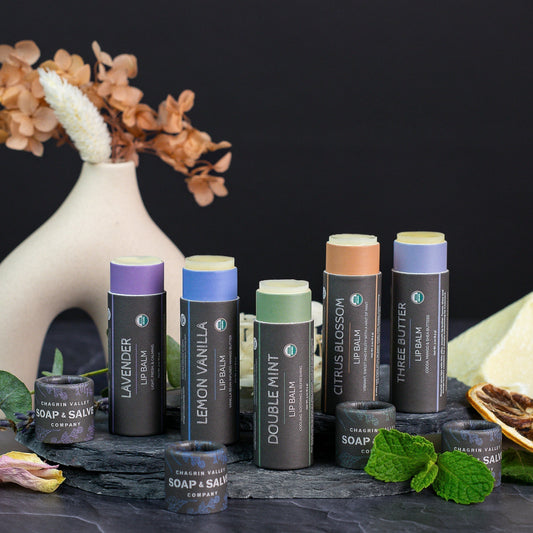
The skin on your lips is extra sensitive and needs a natural lip balm made with ingredients that moisturize, allow your skin to breathe, and penetrate the skin—not simply coat the skin’s surface.
Read Post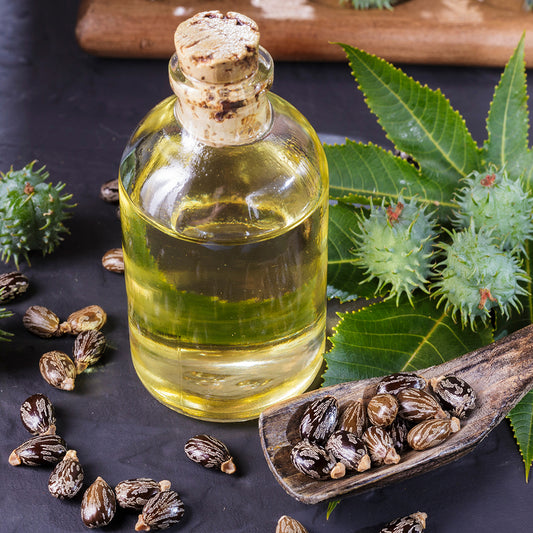
Castor Bean oil is a popular healing agent for many skin problems and a natural remedy for dry skin. It is a fabulous ingredient in natural soap and shampoo, creating a rich bubbly lather.
Read Post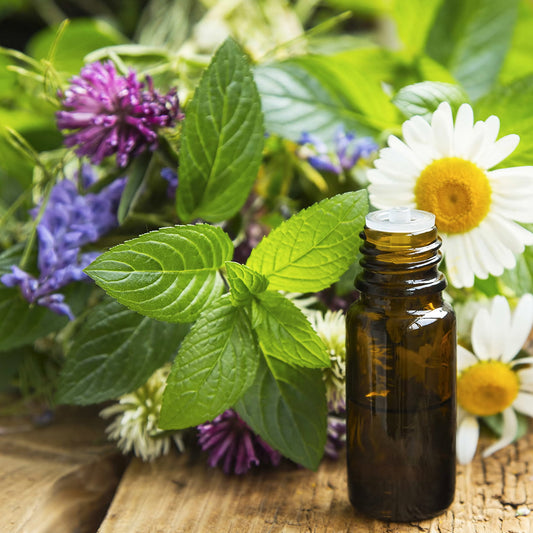
The synergistic composition of essential oils cannot be recreated in a laboratory. Fragrance oils do not offer the natural therapeutic advantages of true essential oils.
Read Post